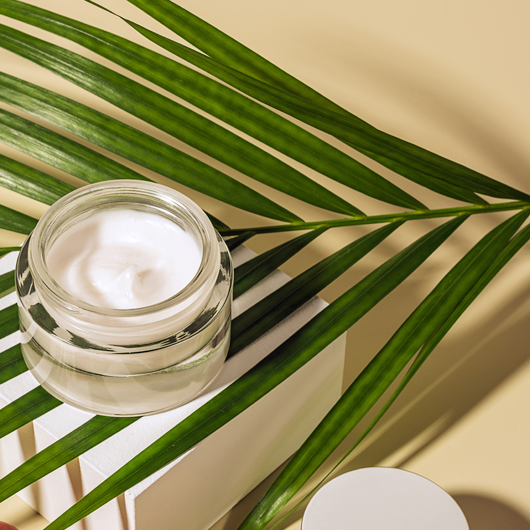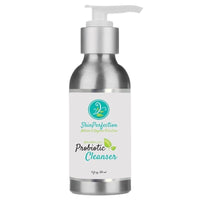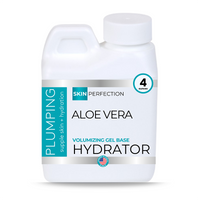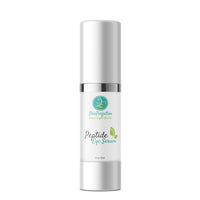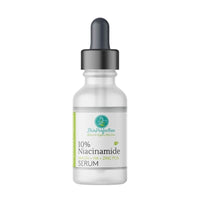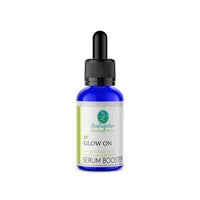Combination
Learn About Your Combination Skin
Combination skin typically means that you experience both dry and oily skin simultaneously. This can be incredibly frustrating because both types need to be treated differently. For example, oily skin solutions only exacerbate your skin's dry parts, while dry skin solutions make the oily areas oilier.

It is one of the most common skin conditions because skin varies from region to region. As a result, many different products have been created to deal with combination skin.
The easiest way to help with combination complexions is to isolate the dry zones from the oily areas and treat each separately.
Women with combination skin see dry, flaky patches and oily, shiny patches. The nose, forehead, and chin are most prone to oiliness, while the cheeks and lips are prone to dryness. This oily area is often called the t-zone; you will see pimples and other blemishes while the cheeks and lips are dry and flaky.
The t-zone's pores have more active oil-producing glands and, therefore, more oil, which blocks pores and creates blemishes. Those same glands are necessary for other face areas to have the exact oily nature and become cracked and irritated without proper moisture.
Unmasking Combination Skin: A Simple Guide for Everyone
If your skin sometimes feels like it's playing a game of tug-of-war between dry and oily, you're not alone. Welcome to the world of combination skin, where some parts of your face might feel like a dry desert while others resemble an oil slick. Let's dive into this unique skin type, its good sides, challenges, and how to understand it all.
What is Combination Skin, Anyway?
Imagine a pizza with half plain cheese and half pepperoni. The two halves are different, right? That's how combination skin works. The forehead, nose, and chin (often called the 'T-zone') are typically oilier. The cheeks? They can be dry or just right.
The Bright Side of Combination Skin
- Versatility: One upside is that the skin can look radiant and youthful in areas where the skin is oily. This shine can sometimes give a natural highlight, making the skin look fresh and glowing.
- Fewer Wrinkles in Certain Areas: The oilier parts of your face, like your T-zone, can show signs of aging slower than the drier areas. This means fewer wrinkles for a bit longer.
The Not-so-Great Side of Combination Skin
- Confusion Over Products: Since different parts of your face have different needs, it might feel like you need two sets of skincare products—one for oily skin and another for dry skin. That can be both confusing and expensive!
- Unpredictability: Some days, the dry areas might feel extra dehydrated, and on others, the oily areas could feel even oilier. This inconsistency can be frustrating.
- Makeup Mishaps: Makeup might slide off the oily parts and cling to the drier patches. Getting makeup to sit just right can sometimes feel like a Herculean task.
When Combination Skin Gets Chaotic
Now, skin, like us, goes through phases. Sometimes, it's smooth sailing, and at other times, it's all over the place. Factors like stress, diet, weather changes, hormones, or even the skincare products you're using can cause your skin to act up more than usual.
This can mean even oilier T-zones or drier cheeks, making it seem like your skin has turned rebellious.
Taking Care of Combination Skin: Keep It Simple
Gentle Cleansing: Instead of strong cleansers that might dry out your skin or make it oilier, opt for a mild, balanced cleanser. The aim is to clean without over-stripping or adding too much oil.
- Hydrate: A lightweight, oil-free moisturizer can be your best friend. It'll moisturize the dry parts without making the oily parts oilier.
- Sunscreen is a Must: Regardless of skin type, everyone should use sunscreen. It covers and protects your skin from UV rays that can cause premature aging and keeps it looking young.
- Masks: Consider using face masks that cater to different needs. For example, you could use a hydrating mask on the drier parts of your face and a clay mask on the oilier sections.
- Exfoliate, But Not Too Much: Exfoliating helps remove dead skin cells, but doing it too much can worsen things. Stick to once a week, and if possible, use a gentle exfoliator.
- Stay Balanced: Remember, the goal is balance. Listen to your skin; it might be time to switch things up if something feels off.
To sum up, while a bit high-maintenance, combination skin is just like any other skin type—it needs understanding and care. With patience and the right products, you can keep your skin feeling and looking its best.
Skin On Other Parts of the Body
While the face is the most common area in which combination skin is present, the entire body may suffer from the same skin type. For example, while the back may produce too much oil and see the same issues with acne as the t-zone, the upper arms may suffer from chronic dryness.
Anywhere there is a collection of oil glands, it will become an oily area when combined with skin. Other areas will be left without natural moisture because the body believes it produces enough. With combination skin, this skin is most likely to develop after puberty and remain from early adulthood until the later stages of life.
Some teenagers may experience combination skin during puberty, which will clear up into their early twenties. Some women will see their oily skin develop a combination as they age.
Combination skin is frustrating for women, as the same cleaners and products working in the t-zone are useless outside this area and vice versa. In addition, anything too aggressive will only worsen acne, and anything too light will leave the skin dry and red.
The only way to combat this is to treat each area separately. A functional, fruit-based cleanser, which removes bacteria and contaminants by over-drying the skin, is a great place to start. From there, use a heavier moisturizer in dry areas and a very light one, if any, in the T-zone.
This will allow the skin to use its natural moisture to nourish the t-zone without drying out other face regions. In addition, finding matte makeup for the t-zone and a hydrating one for the cheeks may be beneficial.
Age-defying Anti-Aging Routine for Combination Skin
Morning:
- Alpha Hydroxy Probiotic Cleanser
- Liquid Peptide Facial Mist
- Peptide Eye Serum
- Peptide Cocktail Anti-Aging Serum
- Clear Skin Oil-free Moisturizer (optional)
Night:
- Alpha Hydroxy Probiotic Cleanser
- Liquid Peptide Facial Mist
- Peptide Eye Serum
- Peptide Cocktail Anti-Aging Serum
- Clear Skin Oil-free Moisturizer (optional)
One to two times a week:
- Glow-On Anti-aging Exfoliator
- Skin Polish Instant Glow Microdermabrasion
Specific Concerns
Click the link below to determine what products will work for specific skin concerns.
Crows Feet
Dark Circles
Dull Complexion
Expression Lines
Hyperpigmentation
Large Pores
Laugh Lines
Lip Lines
Sagging Neck and Jowl Areas
Under-eye Bags and Puffiness
Wrinkles
References:
Baumann, L. (2006). Skin aging and its treatment. The Journal of Pathology, 208(2), 241-251.
Pagnoni, A., Kligman, A. M., & Ebling, F. J. G. (2002). Determinants of acne. Journal of the American Academy of Dermatology, 49(1), 28-36.
Ebling, F. J. (2014). Sebaceous glands, acne, and related disorders: Basic and clinical research, clinical entities, and treatment. In Dermatology (Vol. 2). Elsevier.
Rawlings, A. V. (2007). Trends in stratum corneum research and the management of dry skin conditions. International Journal of Cosmetic Science, 29(2), 75-82.


